Don't wanna be here? Send us removal request.
Text
last one!
(scroll to the bottom of the tumblr page to get to the first journal entry)
Kate Fletcher, author of Craft of Use and advocate of slow fashion says, “a switch from an idea of a consumer society where materials matter little, to a truly material society, where materials—and the world they rely on—are cherished.” In other words, Kate is saying that we as a society are too materialistic, which is obvious. We go black friday shopping, we have too many clothes, and generally too many material goods. But she is saying we do not cherish any of our items enough. We think, oh well, it doesn’t matter if I’m going to only wear it once because it cost me so little.
This links back to the idea of only buying clothing that is so expensive it makes me cringe. This way, I only end up buying high quality clothing that I absolutely love and would wear to death. In the end, I contribute less to clothing waste. My method is to only buy clothing that I would pay the full price for, but get them on sale. This encourages me to only buy high quality clothing that I actually love and cherish, but still be able to save a bit of money. It does also come with the price of hawking all the email promotions I get from companies that have items I am eyeing.
I have a lot of clothes from the past that I bought purely because of the price, and the actual item is only secondary to why I bought it. I remember I used to rummage through the sale racks at Abercrombie or Hollister only looking for my size and a low price. If that was found, I would pick up the item and try it on. Barely any thought as to whether I actually needed or even liked it was put in. My mom and lots of the world still shops like this, which is exactly what Kate Fletcher and the massive piles of textile waste are telling us not to do.
I believe with more activism and awareness, we can become a society of slower fashion. If I can go from insane shopaholic to more conscious shopper, anyone can!
0 notes
Text
twenty
In the 126 years of American Vogue, there has only been one East Asian woman on its cover, Liu Wen, who was part of their “diversity” cover. This really consisted of seven able bodied women of different races but all the same skinny and tall body type. The exception was Ashley Graham, their diverse plus size model who is the only one with her hand covering her leg in an attempt to hide their true size. It baffles me how some people fight for more racial diversity when they really mean they’re fighting for more black representation. I get that a large part of America is mostly Caucasians and African Americans, so they will want to fight for more equality between the two races that are the most visible. But there still needs to be more representation of all ethnicities. There are East Asians, South Asians, Middle Easterns, Latinos, Indigenous peoples, among many others. We need more representation of all these other races.

Racial diversity is not easy; it is not just black and white. There have been many incidents of cultural appropriations. Although not usually done in malicious intent, the world needs more awareness of what is cultural appreciation, compared to cultural appropriation.
People should be able to participate in another culture without offending anyone. A great example of this is, in the 2010 Winter Olympics, American ice dancers Meryl Davis and Charlie White (sorry Tessa and Scott!) did a traditional Indian dance on ice. They did everything accurately, from the costumes, down to the minute detail of the eye twitch which symbolizes good luck. Although both are of Caucasian descent, they successfully learned about and appreciated another culture. Most of the people in the comments of the YouTube clip of their skate are Indian people saying how much they loved their performance.
youtube
A quote I really liked from Sonny Hallet’s article really sums up why we need to be able to participate in other cultures. She says, “Creativity and experimentation and appreciation of different things is where new cultures and traditions come from, and also represents and creates space for hybrid populations to exist and thrive; it’d be tragic to lose that.” Personally, I really appreciate traditional Italian food. I would really love to explore Italian culture more. I would also invite people to explore my Chinese heritage more, including the food, traditional clothing, and customs.
0 notes
Text
nineteen
Today I am going to talk about the way one of my housemates dress. She dresses very normcore. I used to think she was so ordinary, plain, colourless, and missable. When I first became roommates with her in first year, she only dressed in all black, which was the complete opposite of me. I would dress very colourfully in first year, but I have since kept most of the colours in the summer, while keeping my winter clothes more neutral coloured, perhaps, because of her influence on me. She has since dressed a lot more colourfully, which for her means more grays, whites, dark muted colours, or light muted colours, rather than just black, perhaps because of my influence on her. I have really grown to respect her sense of style, which I would describe as minimalist feminine athleisure. She is a fan of the capsule wardrobe. Her wardrobe consists of all the basics: black leggings, skinny jeans, a black mini skirt, joggers, hoodies, knit sweaters, a blazer, white blouses, nothing too fancy. Generally in everything she does, she always goes for maximum efficiency. When she studies for exams, she somehow manages to condense a 3 hour lecture on to one sheet of paper! Haha I took this picture of her outside our house in September and she used it as her Facebook profile picture!

0 notes
Text
seventeen
Ariana Grande’s recent fashion choices are a big source of inspiration for me. For a lot of my teenage years, I was very insecure about my short height because all the models and celebrities in magazines, and all the mannequins were all so tall. My insecurities were heightened when I would try on clothes and everything was far too long for me. Ariana Grande has helped me embrace my height. If we were all the same height and body type we would be robots. But we are not! We are human beings who are all unique and different. I think some clothing companies are realizing that they can make more money off of us when they have diverse models of different ethnicities, heights, and weights. Whatever the motive, the world becomes a more loving and inclusive community when we see actual realistic people modelling clothes.
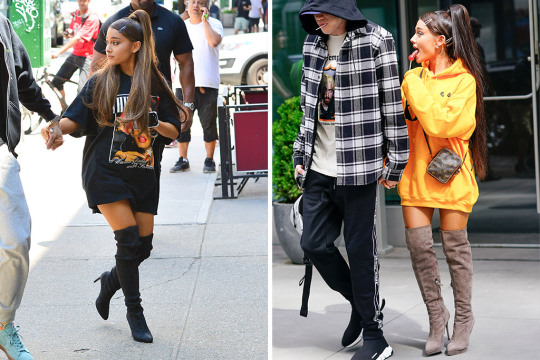
The oversize sweater worn as a dress has been a staple in Ariana Grande’s wardrobe this year. She always styles it with over the knee boots and her signature high ponytail. This is a great example of something that looks great especially on shorter girls. Ariana Grande has helped me to realize that short girls can wear cute outfits too. I do not have to be nearly 6 feet to look good in clothes. We should all be getting clothes that fit our bodies, not trying to get our bodies to fit into clothes.

0 notes
Text
sixteen
I have recently started taking beginner ballet classes this semester off campus. It's definitely a different experience as an adult. It’s much harder to learn now than when I was a child because my body has been the same way it is for a longer time. I really wanted to start ballet again because I genuinely did enjoy it as a child, but I was just very scared of performing.

Although my class is very welcoming of people of all ages and body types, everything involved with ballet is very much for the tall and slender, straight white upper middle class only. All the roles in professional ballet performances are played by mostly white men and women. They all have the specific body type of being very tall and muscular but very slender. They all portray roles of only heterosexuality. And the cost of training in ballet is very high. There are lessons, costumes, teachers, among other expenses.
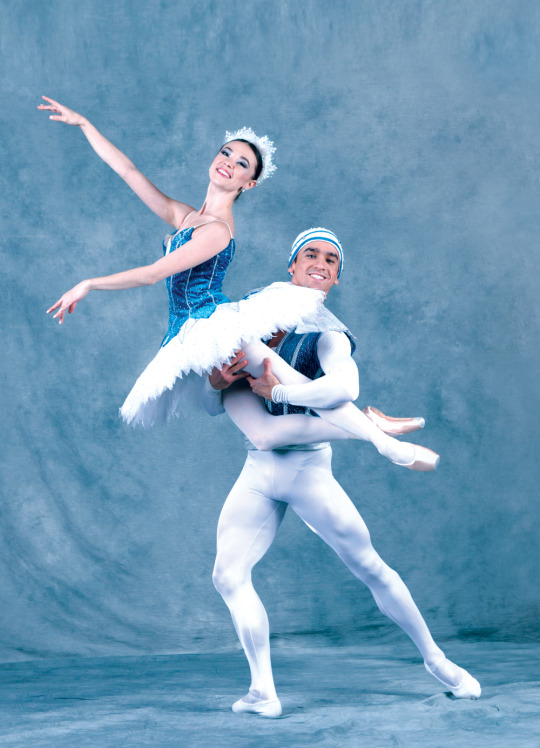
The dance studio is the epitome of middle class femininity. There is a bookshelf with pink girly books about disney princesses and ballerinas. Ballet is very gendered. The costumes and roles are specifically for females or males. There is no gender spectrum, just traditional gender roles. In ballet, men and women are confined to traditional stereotypes not reflective of contemporary relationships. It's the most gendered of all art forms. Right from a ripe young age, girls and boys are trained differently. The ballet technique was developed in the 17th century in the courts of Louis XIV. Ingrained in the technique of ballet is the gender imbalance of men as the strong one who support the light, dainty, fairy like women. Dancers and choreographers today have the struggle of portraying modern day relationships between men and women through the technique of ballet that pulls them back a few centuries.
Choreographer of the National Ballet of Canada, Robert Binet, says yes, roles for male dancers are changing. “I think in the oldest, oldest ballets, especially big Russian productions, they are very macho and strong and powerful and always rescuing women in very heroic ways... I think they are starting to create more ballets where often men are the vulnerable ones who have a more perilous journey through the plot, and women are the ones who really carry the weight of the situation and don’t crumble underneath it.”
Ballet is a great form of exercise and great place for fashion, but there are many barriers that keep a lot of people away from enjoying it too.
0 notes
Text
fifteen
The oldest item of clothing in my wardrobe is this genuine vintage red Polo Ralph Lauren t shirt that my mom used to wear in the 90s. It is slightly cropped, has a boxy fit, and overall is so versatile and simple. It has lasted through all the washes over the years and still looks great. I can wear it casually with a pair of mom jeans, boots, and hoodie in the fall and winter for a very normcore casual look. Or in the summer, I can wear it with a skirt and sneakers for a more feminine normcore look.
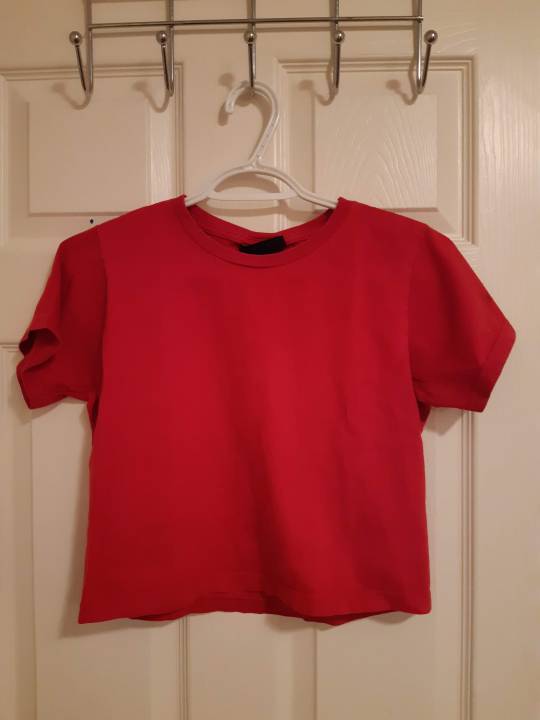
This vintage red t shirt is my go to item when I just want to be comfortable. It has more emotional and nostalgic value than my other clothes since my mom used to wear it. I know she loved this t shirt because she has kept it over all these years. When I wear it, I often think about how my mom would have worn it back in the 90s. Would she have worn it with the chunky sneaker trend, baggy jeans, and a colour block windbreaker jacket that was so popular in the 90s? To me, I am fascinated by the 90s because I like to imagine what life would have been like when my parents met each other. This red t shirt is like my connection to when my parents met, and to when I was born.
0 notes
Text
fourteen
I am trying to introduce my mom to the idea of buying fewer things that are more expensive, but are things she will actually want to use and will last many times. So far she hasn’t been open to the idea of spending more than she usually does on, for example, a dress. The problem here is, although I’ve shown her videos such as The True Cost, among other videos on the excess clothing we buy, she feels very removed from the problems of textile pollution and poor living conditions for garment factory workers. This seems like a common problem I have found among my friends when I ask them what they think about the waste clothing produces.
I’m a nutrition student. The problem between the struggle to consume healthy diets and the struggle to consume ethically responsible clothing have very strong parallels. The problem is not only within the individual. It is not solely a university student’s problem when they eat fast food for a whole week during their midterm season. Fast food is cheap, tastes good, fills a person up, and is easily accessible. Similarly, cheap, unethical clothing is easily accessible. My nutrition professors say healthy food needs to be cheap, taste good, fill a person up, and be easily accessible in order for a person to eat healthy. My professors say there needs to be a change in the food system in order to make healthy food easily accessible for everyone. Similarly, there needs to be major changes in the fashion industry in order for clothing to be ethically made and still reasonable priced. Actually, the changes are not even very major. A $20 t shirt only needs to be 20 cents more expensive to pay its makers a living wage. In other words, major clothing companies only need to make their items 1% more expensive in order to pay garment factory workers fairly.
I’m sure most consumers wouldn’t mind paying 1% more to have their consciences cleared while shopping.
0 notes
Text
thirteen
The holiday season is here and Canada Post is still on a strike D:
Although online shopping is amazing, it is worsening our environment. An increasing amount of carbon dioxide emissions are coming from “the last mile.” This used to mean the last stretch of delivery would go to a store, which often had a cluster of stores that can be easily served by large trucks. Now, the last mile is usually trucks delivering to individual home addresses. Our trips to the mall in relatively fuel efficient cars has been traded in for trucks or other large vehicles. More shipments means more trucks, gridlock, more double parking, more noise and pollution. But, the existing freight system can be made more efficient.
Electric trucks can reduce a lot of greenhouse gases. The problem though, is there would be a huge upfront cost, but they reduce long term costs in fuel and maintenance. Another solution is to encourage shoppers to pick up packages at a central post office, or the mall to reduce the last mile.
0 notes
Text
twelve
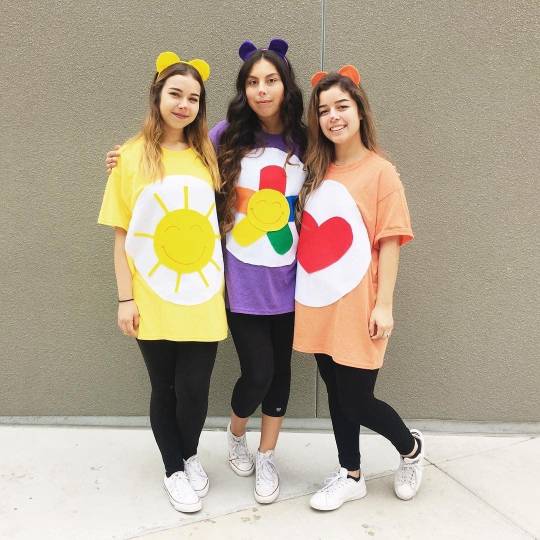
(an example of a cute Halloween costume that was DIYed)
Perhaps the Sexy Halloween Costume has been on a decline because of the next wave of feminism. Women recognize that they are not just a sexual object. In knowing that they are not just here on this earth for their sexuality, women can choose other costumes such as being something cute, funny, scary, ugly, and endless other options. The Sexy Halloween Costume has been on a downswing since 2008, which also coincides with the time around which social media is gaining traction. Perhaps if people know their costumes will be posted online for everyone to see, they want to choose a costume that is more respectable if their boss, mom, or grandpa would end up seeing it. The rise of social media has also allowed people to share more ideas around the globe. Pinterest Instagram, and other platforms can provide people with DIY Halloween Costume Ideas that are still tasteful but not necessarily sexy.
0 notes
Text
eleven
This year for halloween, I dressed up as Snow White. I wore yellow shorts, a blue t shirt, sheer tights, over the knee socks, and a red jacket. I curled my hair and wore a red bow. I painted my nails red, and my lips red, and I carried around a red apple. I wore tons of blush, similar to her look in the original Snow White from 1937. This could totally pass for a regular everyday outfit if i toned down the blush. It would be a great outfit to wear to Disney World.

I usually did not dress up for Halloween growing up, because my mom said the costumes were too expensive. Looking back, I totally agree with my mom. I would not pay $50 and up for a costume that I would wear for only one day. Not only are pre made costumes expensive on the wallet, they are expensive on the lives of the people in third world countries who have to make them. The documentary The True Cost shows the terrible living conditions they have to work in, the health costs they have to go through, the lack of fair pay, the lack of programs such as maternity leave or childcare. I would not buy an overpriced costume now that I know what the people who made it have to go through. Halloween costumes worn for one day are also expensive on the environment. Each costume that everyone buys will likely go either straight to the dumpster, or to a donation centre where it has a 90% chance of going to a dumpster, or to a third world country where the clothes us first world people donate, only to disrupt the local tailoring businesses. Because of initiatives such as #haulternative, I am trying to only buy clothing items that I know I will wear over thirty times. No one wears a Halloween costume more than thirty times.
Everything I used in my Snow White costume I already owned. I didn’t need to spend any additional money. This has been a good experience knowing I didn’t need to break the bank or contribute to the corrupt clothing manufacturing industry in order to dress up for Halloween.
0 notes
Text
ten
From the website fashionrevolution.org, they had an initiative called #haulternative. They present different ways for people to buy less new clothing, such as thrift shopping, upcycling, trading with friends, using sentimental pieces in new ways, or writing a love letter to your favourite piece. I at first thought the love letter sounded silly, but then I realized I have an emotional attachment to my classic denim shirt that I got from Free People in the summer after first year. I got it because I loved how soft it was. It was a splurge item at $70, but it was beyond worth it. The outside is a light medium solid blue colour, and the inside is a lighter blue soft plaid pattern. The back is a longer u shape than the front. The buttons are a shiny gray. The fabric is just all cotton, but it is a different fabric than anything else I own. Instead of just being a solid layer of fabric, it appears as though there are many layers of very thin fabric. It goes well with any outfit. It can be worn buttoned up, or unbuttoned, with a blouse, t shirt, or dress underneath. It can be tied up into a knot at the bottom for a crop top look. In the summer, it was easy to pack in my bag wherever I went and the air conditioning was too cold. I took this denim shirt with me on vacation to Cuba for a week. The vacation was going well, until I opened a glass door in the hotel room that fell off its hinge and shattered on my hand. I had to go to the hospital to get stitches. I have a fear of needles, so getting stitches was very traumatizing for me. Through the whole stitching process, my denim shirt kept me warm, muffled my screams, and wiped my tears. It was the only sweater I brought with me to Cuba, so I wore it for the next 4 days until I went back home to Toronto.
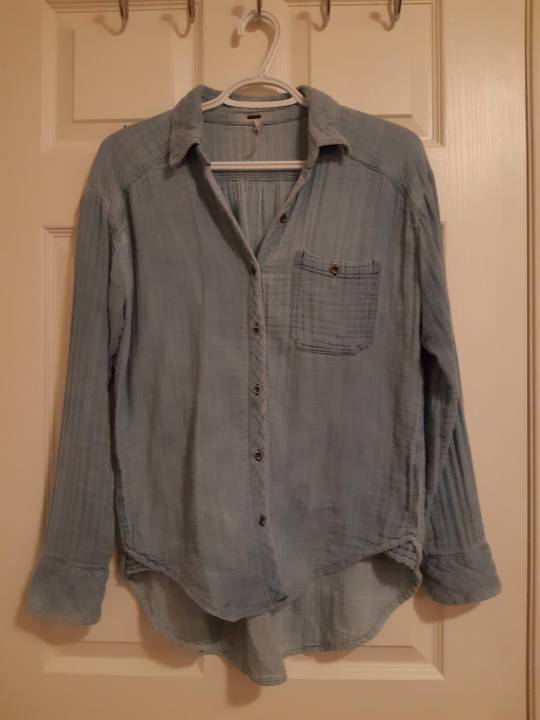
Wearing my denim shirt while recovering from the accident felt like a warm comforting hug. I felt protected while it was on my back. I wore this denim shirt almost every day in second year. Every time I did laundry I would always wash it. I have definitely worn it over 30 times. Now over two years after getting this shirt, it is very well worn but has stood the test of time. There is piling only at the bottom of the shirt where I sit on it. The colour has slightly faded and has now created a soft subtle blue checked pattern on the outside. The first very thin layer of the edges of the sleeves and the corners of the collar have worn out, revealing more layers of very thin fabric underneath. I now still wear my denim shirt quite often.

After going through a traumatizing moment in my life, I am bonded forever to my shirt. It’s like a deep rooted friendship. My shirt was there for me when I was bawling my eyes out, and it was also there for me at my friends’ graduation. It’s been with me through thick and thin, and will be with me on my next adventures.

0 notes
Photo

nine
In first year, I was still very much my high school self, shopping wise. I would go to the mall and spend on things I didn’t really even need.
This all changed when I finally got my first job the summer after first year. I finally knew what it meant to work for a full hour and only get $11.25. I went into a crisis of regretting everything I had bought but barely even used. Most of my wardrobe was unwearable, comprised of things that were only worth a bargain price. For the summer after first year and most of second year, I was unsure of how to spend my money on clothes, so I bought maybe 1 or 2 new items the whole year. A side effect that came out of this was, I ended up spending a lot of money at David’s tea. Instead of spending on clothes, I bought a lot of tea. My money had to go somewhere!
From this shopping cleanse, I realized that most of my previous shopping was very money based. As long as something was deeply discounted, it kind of fit, and I kind of liked it, I would buy it. After reevaluating my spending habits, I realized I wanted to actually feel good in the things I wore.
When I moved back into London for third year, I only packed the clothes I knew I would actually wear. I recycled a lot of clothes in my city’s textile recycling bins. I realized I actually had very few winter clothes. I felt like I was wearing the same sweaters, jeans, and leggings over and over again. I had to wash everything from my closet every time I did laundry.
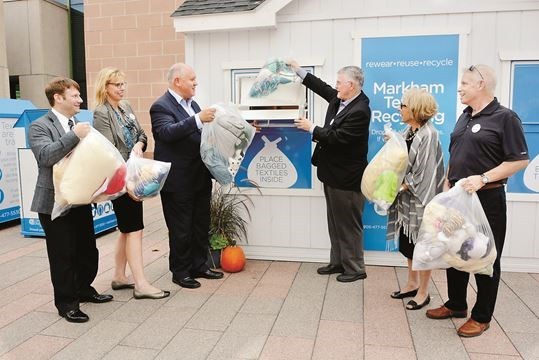
Slowly, I allowed myself to start shopping again. My new method that I still stick by is, look first, buy later. I like scrolling through online stores because there are so many more options, and more sizes that fit me, especially the shorter or petite sizes. When a new collection drops, I like going into the actual stores to try things on, then wait until it goes on sale and decide if I actually need it. This method has helped me to cut down the excessive spending. Don’t get me wrong, there are still a few times where I impulse purchased something I didn’t need.

I find online shopping actually really helpful in cutting down purchasing things I don’t really need, as long as there is free shipping, no duties, and I am able to return it. There are so many more options online than in stores. I can browse through everything, add them to my shopping bag, and leave it for later. During the waiting period, I can decide do I really need it, or do I already have something like this. This method really helps prevent me from impulse purchasing.
0 notes
Photo



eight
I realize I have such an excessive shopping habit partly because my mom always took me shopping when I was a kid. It was a stress relief for her and it is for me as well. Honestly, retail therapy really does work! I think for me, the reason why shopping can be so therapeutic is because I actually have full control over all the decisions I make. In the world we live in, there are so many uncontrollable things. Unexpected events happen, and you can’t always have everything you want. That’s not to say I can get everything I want from shopping. What I’m saying is, if I find something that I actually need and I am able to pay for it, then I can make the decision to purchase it. When shopping, I am usually only going shopping to benefit myself, and I get tangible materials from my decisions. It’s a form of self care.
My mom raised me to get those good deals! If I was an autonomous adult during the 90s when America was in the midst of its extremely discounted shopping craze, I would also be buying everything I see. If clothes used to be very expensive and people would only own a few items, I would also buy a lot of clothes if they were suddenly a fraction of the price I was used to seeing. I pretty much went through my own extremely discounted shopping craze through middle school and high school without experiencing the expensive prices of the past. hahaha
Through learning about the history of clothing prices, I understand better why my mom and a lot of my aunts still buys only very cheap clothing, and a lot of it.
0 notes
Text
seven
I am trying to introduce my mom to the idea of buying fewer things that are more expensive, but are things you actually want to use and will last many times. So far she hasn’t been open to the idea of spending more than she usually does on, for example, a dress. The problem here is, although I’ve shown her videos such as The True Cost, among other videos on the excess clothing we buy, she feels very removed from the problems of textile pollution and poor living conditions for garment factory workers. This seems like a common problem I have found among my friends when I ask them what they think about the waste clothing produces.
I’m a nutrition student. The problem between the struggle to consume healthy diets and the struggle to consume ethically responsible clothing have very strong parallels. The problem is not only within the individual. It is not solely a university student’s problem when they eat fast food for a whole week during their midterm season. Fast food is cheap, tastes good, fills a person up, and is easily accessible. Similarly, cheap, unethical clothing is easily accessible. My nutrition professors say healthy food needs to be cheap, taste good, fill a person up, and be easily accessible in order for a person to eat healthy. My professors say there needs to be a change in the food system in order to make healthy food easily accessible for everyone. Similarly, there needs to be major changes in the fashion industry in order for clothing to be ethically made and still reasonable priced. Actually, the changes are not even very major. A $20 t shirt only needs to be 20 cents more expensive to pay its makers a living wage. In other words, major clothing companies only need to make their items 1% more expensive in order to pay garment factory workers fairly.
I’m sure most consumers wouldn’t mind paying 1% more to have their consciences cleared while shopping.
0 notes
Text
six
After watching the film The True Cost, I found myself relating so strongly to the messages about spending excessively on clothes that will only be worn a few times. A good quote is, "They're making us believe that we are rich or wealthy because we can buy a lot, but in fact they are making us poorer. The only person who is becoming richer is the owner of the fast fashion brand." Personally, the goal in buying clothes for myself is often to look like I spent more money than I actually did. So I would keep buying more clothes to make myself look like I had more money. With the amount of money I wasted on clothes before I even had a job, I could have saved up for something much more worthwhile, such as going on vacation.
Another quote from the film that I can really relate to is, "I was a person who had the classic massive closet. Tons of clothes, but nothing to wear." I remember I used to take forever to decide what to wear. My mom would say, “Why are you taking so long, hurry up!” I had so many clothes that were unwearable but I wasn’t willing to throw out, so I had to sort through everything that I would never wear, to get to the few items that I actually wore.
0 notes
Photo

(what I wore pretty much everyday in first year university)
five
When I entered my first year of university, I actually needed to wear clothes everyday. I was finally free from an entire lifetime of being forced to look exactly like everyone else.
I was still wearing most of the clothes I had kept from high school. Because I was used to having a default uniform everyday of my life up until this point, I found it very difficult and draining to have to choose what to wear. I started to wear a lot of sweatpants and hoodies as a statement of saying I really don’t care what I look like.
A few months into university, I realized I gravitated towards the same few clothes. I got rid of most of my clothes that I didn’t wear by donating them or giving them to my mom and sister. The strange thing about having the freedom to choose what to wear every day is, I kept fewer clothes in my closet than I did when I wore the same uniform everyday. When I wore a uniform, I bought a lot of clothes that I thought I would wear, but wouldn’t actually wear on a daily basis. I bought so many clothes because I liked looking at it hanging in my closet.
Once I started to actually need to wear those clothes, my perspective shifted from wanting to look at my clothes to wanting to look good in my clothes.
We as a consumer society have the need to own everything we like. Myself included. Why can’t we just be happy appreciating something without owning it.
0 notes
Photo


(what my facebook page for selling old clothes kinda looked like)
(a sample of the men’s collection of frank and oak’s ethical clothing)
four
A few years after this shopping craze, my sister and I started selling all our clothes on facebook when I was in grade 11. We realized we had so many clothes we never wore that were just taking up space in our closet. Everything didn’t fit right, was worth very little, but added up over the years.
Luckily, we were able to sell quite a lot the first year. People were still into the labelled Abercrombie, Hollister, and Aeropostale t shirts.
In later years though, more and more people started selling their old clothes on facebook, and nobody bought our clothes anymore. A lot of things we didn’t sell we donated to the H&M textile donation boxes.
The first year we started selling clothes was 2014. The Rana Plaza incident happened in April 2013. Perhaps because of the building collapse, people were becoming more aware of fast fashion and its effects on the lives of people who have to manufacture our clothes. People are starting to focus more on quality over quantity. This is perhaps why nobody buys my old clothes in bulk anymore. Although they are old clothes and would not contribute to the environment negatively if someone just took them off my hands, people don’t just want a whole bunch of clothes anymore. People want fashion that makes them look good and is easy to style.
H&M announced it will be closing 7000 of its stores around the world. Meanwhile, ethically made fashion companies such as the Montreal based Frank and Oak are growing. Frank and Oak also offers a subscription service of clothes that are picked by a stylist based on your preferences. This could be especially useful to people who do not usually know how to style their clothes. The future of fashion is looking more sustainable!
0 notes